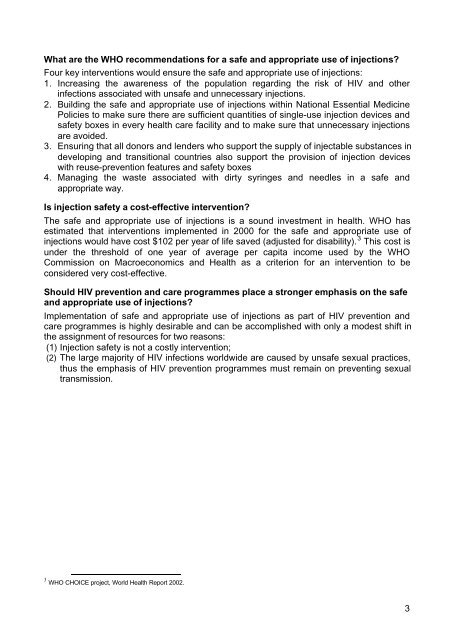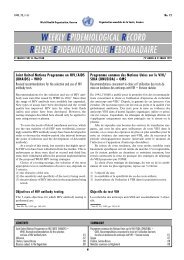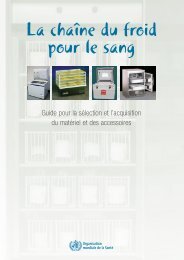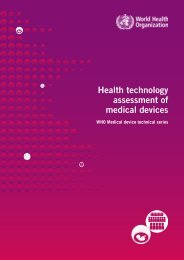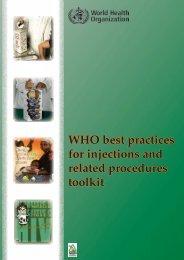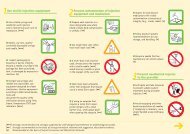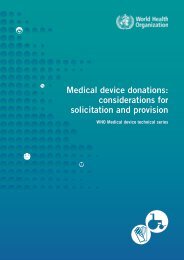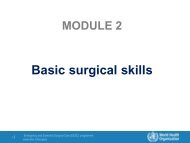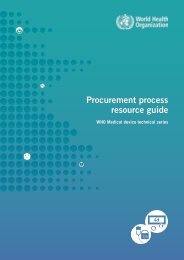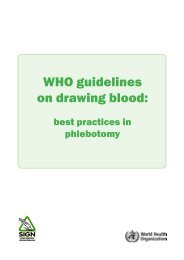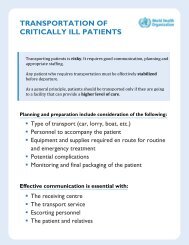SAFETY OF INJECTIONS - World Health Organization
SAFETY OF INJECTIONS - World Health Organization
SAFETY OF INJECTIONS - World Health Organization
You also want an ePaper? Increase the reach of your titles
YUMPU automatically turns print PDFs into web optimized ePapers that Google loves.
What are the WHO recommendations for a safe and appropriate use of injections?Four key interventions would ensure the safe and appropriate use of injections:1. Increasing the awareness of the population regarding the risk of HIV and otherinfections associated with unsafe and unnecessary injections.2. Building the safe and appropriate use of injections within National Essential MedicinePolicies to make sure there are sufficient quantities of single-use injection devices andsafety boxes in every health care facility and to make sure that unnecessary injectionsare avoided.3. Ensuring that all donors and lenders who support the supply of injectable substances indeveloping and transitional countries also support the provision of injection deviceswith reuse-prevention features and safety boxes4. Managing the waste associated with dirty syringes and needles in a safe andappropriate way.Is injection safety a cost-effective intervention?The safe and appropriate use of injections is a sound investment in health. WHO hasestimated that interventions implemented in 2000 for the safe and appropriate use ofinjections would have cost $102 per year of life saved (adjusted for disability). 3 This cost isunder the threshold of one year of average per capita income used by the WHOCommission on Macroeconomics and <strong>Health</strong> as a criterion for an intervention to beconsidered very cost-effective.Should HIV prevention and care programmes place a stronger emphasis on the safeand appropriate use of injections?Implementation of safe and appropriate use of injections as part of HIV prevention andcare programmes is highly desirable and can be accomplished with only a modest shift inthe assignment of resources for two reasons:(1) Injection safety is not a costly intervention;(2) The large majority of HIV infections worldwide are caused by unsafe sexual practices,thus the emphasis of HIV prevention programmes must remain on preventing sexualtransmission.3 WHO CHOICE project, <strong>World</strong> <strong>Health</strong> Report 2002.3


